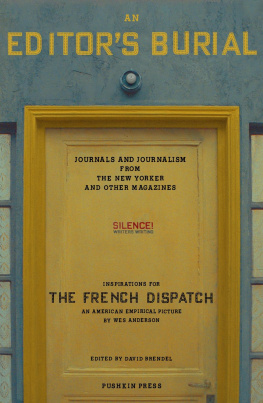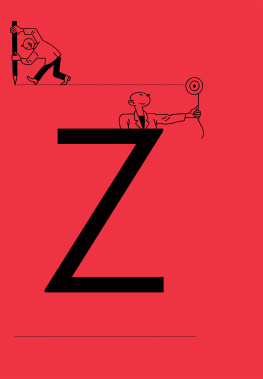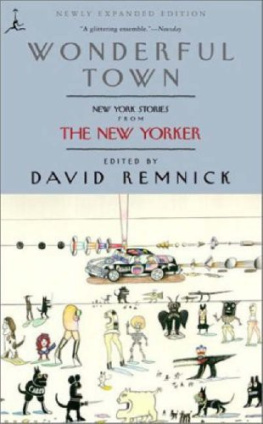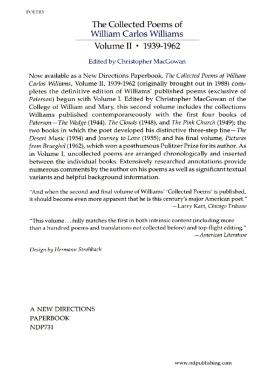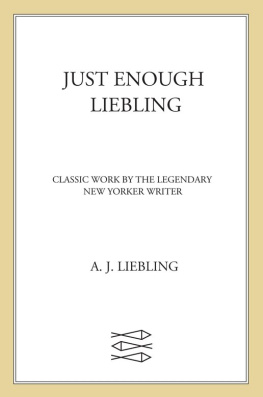The New Yorker Magazine - The 40s: The Story of a Decade
Here you can read online The New Yorker Magazine - The 40s: The Story of a Decade full text of the book (entire story) in english for free. Download pdf and epub, get meaning, cover and reviews about this ebook. year: 2014, publisher: Random House, genre: Art. Description of the work, (preface) as well as reviews are available. Best literature library LitArk.com created for fans of good reading and offers a wide selection of genres:
Romance novel
Science fiction
Adventure
Detective
Science
History
Home and family
Prose
Art
Politics
Computer
Non-fiction
Religion
Business
Children
Humor
Choose a favorite category and find really read worthwhile books. Enjoy immersion in the world of imagination, feel the emotions of the characters or learn something new for yourself, make an fascinating discovery.

- Book:The 40s: The Story of a Decade
- Author:
- Publisher:Random House
- Genre:
- Year:2014
- Rating:5 / 5
- Favourites:Add to favourites
- Your mark:
The 40s: The Story of a Decade: summary, description and annotation
We offer to read an annotation, description, summary or preface (depends on what the author of the book "The 40s: The Story of a Decade" wrote himself). If you haven't found the necessary information about the book — write in the comments, we will try to find it.
And featuring new perspectives by Joan Acocella Hilton Als Dan Chiasson David Denby Jill Lepore Louis Menand Susan Orlean George Packer David Remnick Alex Ross Peter Schjeldahl Zadie Smith Judith Thurman
The 1940s are the watershed decade of the twentieth century, a time of trauma and upheaval but also of innovation and profound and lasting cultural change. This is the era of Fat Man and Little Boy, of FDR and Stalin, but also of Casablanca and Citizen Kane, zoot suits and Christian Dior, Duke Ellington and Edith Piaf.
The 1940s were when The New Yorker came of age. A magazine that was best known for its humor and wry social observation would extend itself, offering the first in-depth reporting from Hiroshima and introducing American readers to the fiction of Vladimir Nabokov and the poetry of Elizabeth Bishop. In this enthralling book, masterly contributions from the pantheon of great writers who graced The New Yorkers pages throughout the decade are placed in history by the magazines current writers.
Included in this volume are seminal profiles of the decades most fascinating figures: Albert Einstein, Marshal Ptain, Thomas Mann, Le Corbusier, Walt Disney, and Eleanor Roosevelt. Here are classics in reporting: John Herseys account of the heroism of a young naval lieutenant named John F. Kennedy; A. J. Lieblings unforgettable depictions of the Fall of France and D Day; Rebecca Wests harrowing visit to a lynching trial in South Carolina; Lillian Rosss sly, funny dispatch on the Miss America Pageant; and Joseph Mitchells imperishable portrait of New Yorks foremost dive bar, McSorleys.
This volume also provides vital, seldom-reprinted criticism. Once again, we are able to witness the eras major figures wrestling with one anothers work as it appearedGeorge Orwell on Graham Greene, W. H. Auden on T. S. Eliot, Lionel Trilling on Orwell. Here are The New Yorkers original takes on The Great Dictator and The Grapes of Wrath, and opening-night reviews of Death of a Salesman and South Pacific.
Perhaps no contribution the magazine made to 1940s American culture was more lasting than its fiction and poetry. Included here is an extraordinary selection of short stories by such writers as Shirley Jackson (whose masterpiece The Lottery stirred outrage when it appeared in the magazine in 1948) and John Cheever (of whose now-classic story The Enormous Radio New Yorker editor Harold Ross said: It will turn out to be a memorable one, or I am a fish.) Also represented are the great poets of the decade, from Louise Bogan and William Carlos Williams to Theodore Roethke and Langston Hughes.
To complete the panorama, todays New Yorker staff, including David Remnick, George Packer, and Alex Ross, look back on the decade through contemporary eyes. Whether its Louis Menand on postwar cosmopolitanism or Zadie Smith on the decades breakthroughs in fiction, these new contributions are illuminating, learned, and, above all, entertaining.
The New Yorker Magazine: author's other books
Who wrote The 40s: The Story of a Decade? Find out the surname, the name of the author of the book and a list of all author's works by series.


